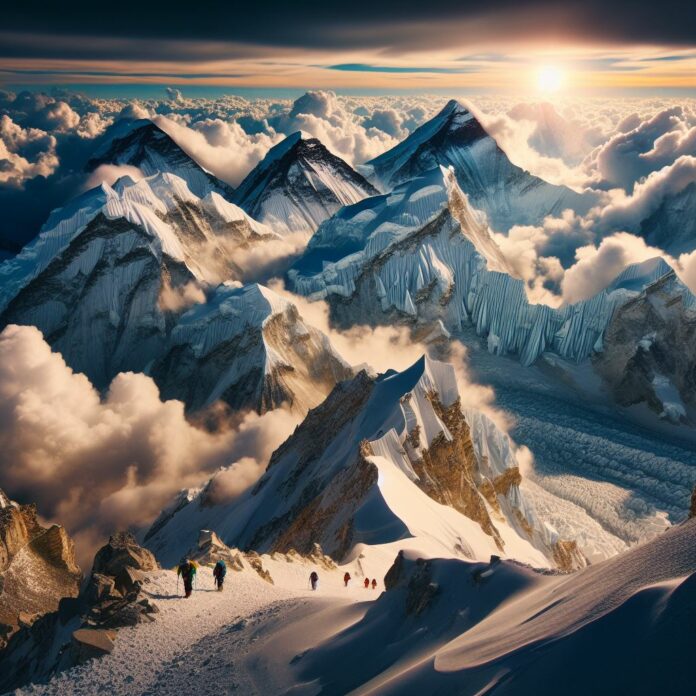Researching suitable location for outdoor adventure is crucial to gather information and make an informed decision. Utilize online resources, such as travel websites and forums, to learn about different locations.
Local knowledge and recommendations from seasoned adventurers or local tourism offices can provide valuable insights. Reviews and recommendations from other travelers can also help in assessing the suitability of a location.
Plan and preparation play a vital role in ensuring a successful outdoor adventure. Set clear objectives and goals for your trip and make a checklist of the necessary equipment and gear required. Familiarize yourself with navigation techniques and carry maps of the area. Be aware of any permits and regulations that may be required for specific activities.
Finally, after considering all the factors and conducting thorough research, finalize the decision based on the location that best aligns with your preferences, goals, and safety considerations. By taking these steps, you can choose a suitable location for your outdoor adventure and have an unforgettable experience.
Factors to Consider When Choosing a Location
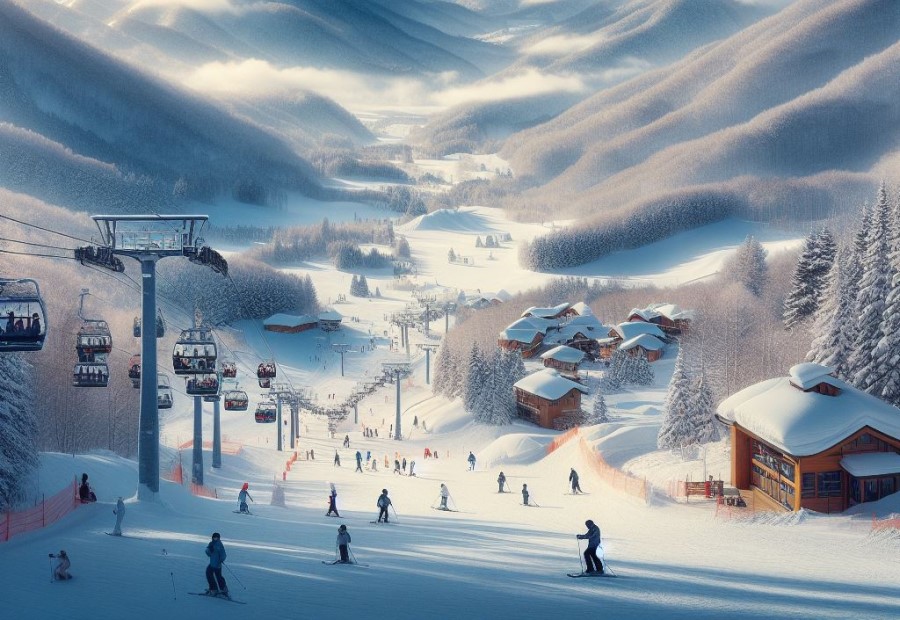
Weather and Climate
When selecting a suitable location for an outdoor adventure, it is vital to take into account the weather and climate. These aspects can have a significant impact on your experience and safety throughout your trip. Here are some factors to consider:
- Temperature: Make sure to check the average temperature during your visit to ensure it matches your preferences and the activities you plan to partake in.
- Precipitation: Consider the amount of rainfall or snowfall in the area. This can influence trail conditions, accessibility, and overall enjoyment.
- Seasonal variations: Familiarize yourself with how the weather changes throughout the year. Determine if you prefer moderate temperatures, blooming landscapes, or specific natural phenomena.
- Extreme weather events: Stay informed about any potential storms, hurricanes, or heatwaves that may occur while you are on your adventure. This knowledge will assist you in planning and preparing accordingly.
- Microclimates: Certain regions may have microclimates, where weather conditions can vary significantly within a small area. Conduct thorough research on these nuances to help you choose a location that aligns with your desired climate.
By taking these factors into consideration, you can make an educated decision about the weather and climate of the location you select for your outdoor adventure.
Terrain and Landscape
When selecting an ideal location for an outdoor adventure, the terrain and landscape are key factors to consider. Several important elements should be taken into account:
- Terrain type: The type of terrain, whether it is mountainous, hilly, or flat, will determine the level of physical challenge and the types of activities that can be enjoyed.
- Vegetation: The presence of dense forests, open meadows, or rocky landscapes will contribute to the location’s overall beauty and atmosphere, as well as provide shade and shelter.
- Water bodies: Rivers, lakes, or waterfalls can enhance the scenic beauty and provide opportunities for swimming, fishing, or boating.
- Elevation: The altitude of the location affects the temperature, climate, and oxygen levels, which should be considered when planning for appropriate gear, clothing, and physical exertion.
- Accessibility: It is essential to evaluate the ease of accessing the location, including parking availability, hiking trails, or transportation options, to ensure convenience and safety during the adventure.
- Natural features: Look for unique natural features like caves, cliffs, or breathtaking viewpoints that can elevate the overall experience and offer possibilities for exploration and photography.
By taking these factors into account, outdoor enthusiasts can select a suitable location that aligns with their preferences, abilities, and desired adventure experiences.
Accessibility
When considering the accessibility of a location for an outdoor adventure, there are several factors to take into account:
- Accessibility: When evaluating the accessibility of a location, consider how far it is from your starting point. This will determine how long it will take to reach the destination.
- Transportation: Evaluate the mode of transportation required to reach the location. Determine if you will need a car, bike, or if there are public transportation options available.
- Terrain: Examine the terrain leading to the location. Assess if it is suitable for the type of transportation you will be using and if it poses any challenges or limitations.
- Facilities: Check if there are any necessary facilities nearby such as parking, restrooms, or campsites. This will impact your comfort and convenience during the adventure.
When planning an outdoor adventure, accessibility plays a significant role in ensuring a smooth and enjoyable experience. By considering these factors, you can choose a location that is easily reachable and accommodates your specific needs.
In the late 1800s, a group of explorers embarked on a daring expedition to reach the summit of Mount Everest, the tallest mountain in the world.
They faced numerous challenges along the way, including treacherous terrain and extreme weather conditions. However, their determination and perseverance led them to conquer the seemingly inaccessible peak.
Safety
When choosing a location for an outdoor adventure, safety should be a top priority. Here are some important factors to consider:
- Weather and Climate: Research the weather patterns and climate conditions of the area to ensure that they are suitable and safe for the activities you plan to engage in.
- Terrain and Landscape: Familiarize yourself with the terrain to assess any potential hazards such as steep cliffs, rocky areas, or dense vegetation that may pose risks.
- Accessibility: Choose a location that is easily accessible, with clearly marked trails or roads, and consider the distance from emergency services.
- Prioritize your safety: Prioritize your safety by packing essential safety equipment like first aid kits, proper gear, and clothing appropriate for the environment.
- Activities and Attractions: Consider the safety measures and precautions needed for the specific activities you plan to undertake, whether it’s hiking, camping, climbing, or water sports.
- Facilities and Amenities: Look for locations that provide essential amenities like clean water sources, restrooms, and designated camping areas to ensure a safe and comfortable experience.
Remember, safety should always come first when planning outdoor adventures, so it’s crucial to thoroughly research and assess the location to minimize any potential risks or accidents.
Activities and Attractions
When selecting a destination for an outdoor escapade, it is crucial to consider the available activities and attractions offered. Here are some factors to bear in mind:
- Available activities: Take into account your preferences for activities like hiking, camping, fishing, or kayaking. Opt for a location that provides the specific activities you enjoy.
- Diverse attractions: Look for a destination that boasts a variety of attractions to explore. This could encompass breathtaking landscapes, wildlife encounters, historical sites, or cultural experiences.
- Accessibility: Make sure that the activities and attractions are easily accessible from your chosen location. Consider factors such as distance, transportation options, and any required permits or fees.
- Safety concerns: Conduct research on the safety precautions and guidelines for the activities you intend to partake in. Select a location that prioritizes visitor safety and offers necessary facilities or resources.
- Reviews and recommendations: Read reviews and seek recommendations from fellow outdoor enthusiasts or online resources. This can provide insights into the quality and popularity of the activities and attractions in a specific location.
Pro tip: To maximize your outdoor adventure, create a well-rounded itinerary that encompasses a mix of activities and attractions. This will guarantee a balanced and unforgettable experience.
Facilities and Amenities
When selecting a location for your outdoor adventure, it is crucial to consider the facilities and amenities provided in the area. These resources can significantly enhance your experience and make your trip more comfortable and enjoyable.
- Accommodation options: Look for areas that offer a variety of accommodation options, such as campsites, cabins, or hotels. This allows you to choose the type of lodging that suits your preferences and budget.
- Restroom and shower facilities: Access to clean and well-maintained restroom and shower facilities is vital for hygiene and convenience during your outdoor adventure.
- Cooking and dining areas: Search for locations that provide designated areas for cooking and dining. This can include picnic areas, communal kitchens, or barbecue facilities, enabling you to prepare and enjoy meals in a convenient and comfortable environment.
- Recreational facilities: Take into consideration if there are any recreational facilities available in the area, such as swimming pools, sports fields, or playgrounds. These amenities can offer additional opportunities for relaxation and enjoyment during your adventure.
- Access to supplies: Verify if there are nearby stores or facilities where you can purchase outdoor gear, food, or other supplies that you may need during your trip. This ensures that you have easy access to essential items if needed.
- Visitor centers and information resources: Look for locations that have visitor centers or information resources that can provide guidance, maps, and local knowledge about the area. These resources can assist you in making the most of your outdoor adventure and discovering hidden gems.
Researching Potential Locations
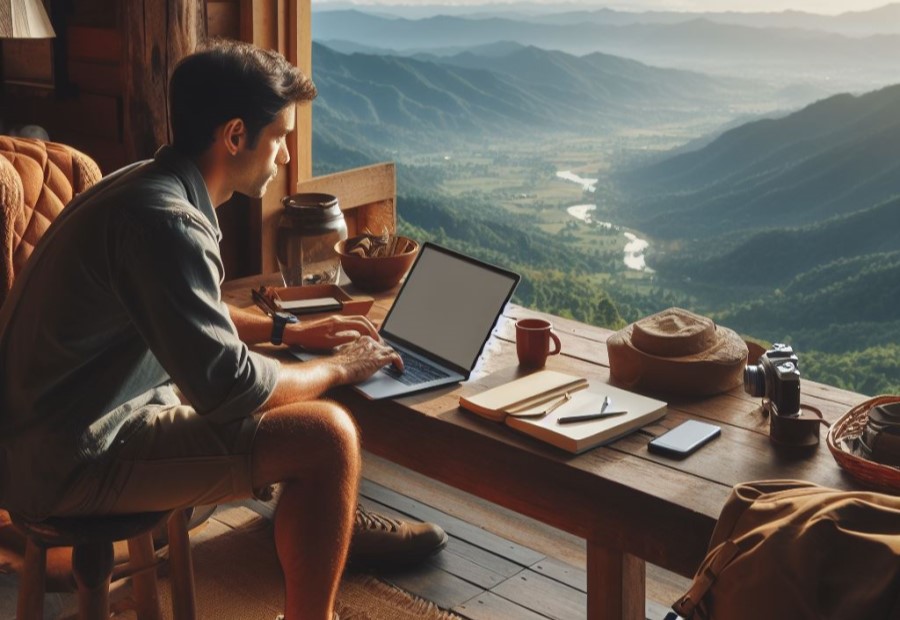
Online Resources
When it comes to researching potential locations for your outdoor adventure, utilizing online resources can be incredibly helpful. These resources offer a wealth of information at your fingertips, allowing you to make informed decisions about the best location for your adventure.
| Online Websites and Forums | There are various websites and forums dedicated to outdoor activities and adventure. These platforms provide valuable insights, tips, and recommendations from experienced adventurers who have already explored different locations. You can find detailed information about the terrain, weather conditions, accessibility, and nearby attractions. |
| Social Media Groups | Joining social media groups that focus on outdoor adventure is another excellent way to gather information. These groups have active members who willingly share their own experiences, photos, and recommendations. You can ask questions, get advice, and connect with like-minded individuals who can provide valuable insight into different locations. |
| Official National Park and Forest Websites | To get accurate and up-to-date information about specific national parks and forests, it’s best to visit their official websites. These websites often provide detailed maps, hiking trails, camping information, permits, and regulations. You can also find announcements about any closures or special events that may affect your plans. |
By utilizing these online resources, you can gather all the necessary information about potential outdoor adventure locations. Make sure to cross-reference multiple sources to ensure accuracy and reliability. It’s also essential to consider recent reviews and current conditions when making your final decision. Happy exploring!
Local Knowledge
When researching potential locations for an outdoor adventure, local knowledge is essential for ensuring a successful and enjoyable experience. Here are some crucial factors to consider:
- Geographical features: Local knowledge can provide valuable insights into the specific terrain and landscape of the area, including challenging areas or hidden gems worth exploring.
- Weather patterns: Locals can offer valuable information about the region’s weather and climate conditions, helping you plan your adventure when conditions are most favorable.
- Hidden spots and attractions: Local knowledge can reveal lesser-known activities and attractions that may not be widely advertised but offer unique experiences.
- Safety precautions: Locals can provide advice on potential risks or hazards in the area, ensuring that you are well-prepared and equipped with the necessary knowledge and equipment to stay safe.
- Navigation tips: Locals familiar with the area can guide you on the best routes, trails, and landmarks to navigate, enhancing your adventure and preventing you from getting lost.
- Local customs and regulations: Understanding local customs, rules, and regulations will help you respect and appreciate the environment while avoiding any legal issues during your outdoor activities.
By tapping into the knowledge of the local community, you can gain valuable insights that will enhance your outdoor adventure and make the most of your chosen location.
Reviews and Recommendations
When selecting a location for an outdoor adventure, it is vital to take into account reviews and recommendations from others who have previously experienced the location. Reviews and recommendations can offer valuable insights and assist you in making an informed decision.
Here are some factors to consider:
- Online reviews: Search for reviews on websites and forums dedicated to outdoor activities. Seek out recent reviews from reliable sources.
- Personal recommendations: Consult friends, family, or fellow outdoor enthusiasts for their recommendations. They may have firsthand experience or know someone who does.
- Guidebooks: Refer to guidebooks or travel magazines that specialize in outdoor adventures. These publications often feature thorough reviews and insider tips.
By gathering information from reviews and recommendations, you can obtain a better understanding of what to anticipate from a specific location. Remember that opinions may differ, so it is important to identify common trends or themes.
This will aid you in making a more informed decision and selecting a location that aligns with your preferences and objectives for the outdoor adventure.
Plan and Preparation
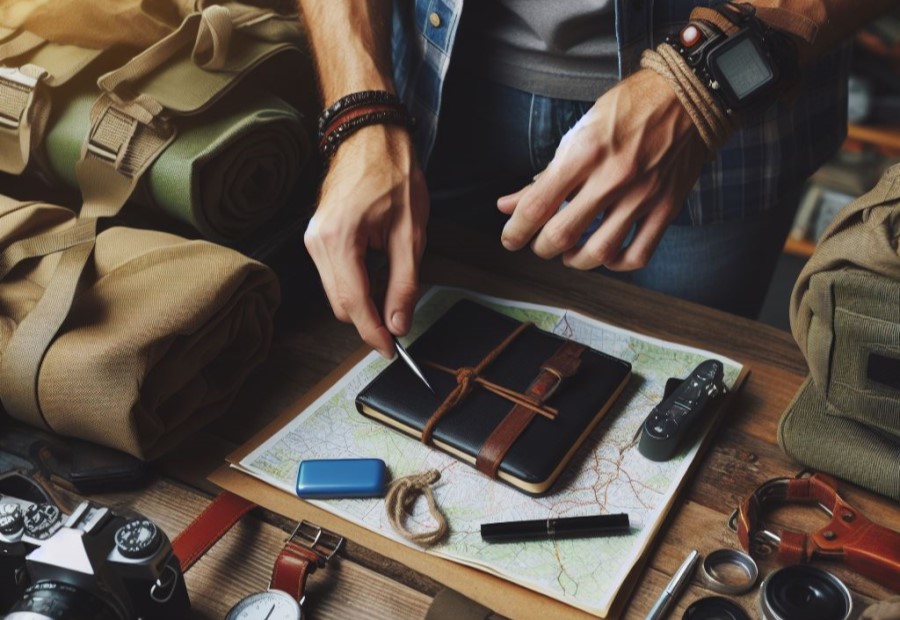
Setting Objectives and Goals
When setting objectives and goals for your outdoor adventure, it is important to be clear and specific about what you want to achieve. Here are the steps to consider:
- Define your purpose: Determine the main reason for your adventure, whether it’s to challenge yourself physically, explore nature, or simply have fun.
- Set measurable goals: Break down your overall objective into smaller, attainable targets. For example, if your purpose is to challenge yourself physically, set a goal to hike a certain distance or reach a specific summit.
- Consider time constraints: Determine how much time you have available for your adventure and set goals that are realistic within that timeframe.
- Assess your abilities: Evaluate your skills, physical fitness, and experience to set goals that are challenging but still within your capabilities. This will ensure a safe and enjoyable adventure.
- Account for external factors: Take into account any factors that may affect your goals, such as weather conditions, terrain difficulty, or the availability of necessary resources.
- Review and adjust: Regularly assess your progress towards your goals and make adjustments as needed. This will help keep you on track and motivated throughout your adventure.
Equipment and Gear
When planning for an outdoor adventure, it is vital to take into consideration the proper equipment and gear. This ensures a safe and enjoyable experience. Here are some crucial factors to consider:
- Research the specific requirements for your chosen activity. Different activities may necessitate different types of equipment and gear.
- Ensure that your equipment and gear are in good condition and meet safety standards. Regularly check for any damages or wear and tear.
- Consider the weather conditions and terrain of your chosen location. This will determine the specific gear you will need, such as appropriate clothing, footwear, and protective gear.
- Create a list of all the essential equipment and gear you will need. This includes items like backpacks, tents, sleeping bags, cooking utensils, navigation tools, and first aid kits.
- Check the weight and size of the equipment and gear. It should be lightweight and easily portable, especially if you will be trekking or hiking long distances.
- Consider the quality and durability of the equipment and gear. Investing in high-quality products will ensure that they last longer and perform better.
- Consult with outdoor experts or experienced adventurers for recommendations on the best equipment and gear for your specific activity.
- Ensure that you have the necessary skills and knowledge to properly use and maintain your equipment and gear. It’s important to know how to set up tents, use navigation tools, and handle any emergency situations.
By taking these factors into account, you can choose the appropriate equipment and gear that will enhance your outdoor adventure and ensure a safe and memorable experience.
Navigation and Maps
Navigation and maps are essential for a safe and successful outdoor adventure, providing crucial guidance and direction.
- For map selection, it is important to choose a detailed topographic map that covers the entire area of your adventure, including contour lines, landmarks, and other important features.
- A compass is an important tool for accurate navigation. Familiarize yourself with how to use it to determine direction and practice using it before embarking on your adventure.
- When wayfinding, maps help you identify key landmarks and navigate using natural features such as mountains, rivers, or trails. Pay attention to your surroundings to stay on track.
- Trail markers, such as colored blazes, cairns, or signs, are often found on many trails. Learn the specific trail markers for your adventure and follow them to stay on the correct path.
- Consider using a GPS device or smartphone app that provides real-time location data and tracks your progress. Don’t forget to bring extra batteries or a power bank.
- Maps can also include important emergency information, such as nearby facilities, evacuation routes, and emergency contact numbers. Make sure to take note of these details for your safety.
By understanding navigation techniques and utilizing accurate maps, you can have a smooth and enjoyable outdoor adventure.
Permits and Regulations
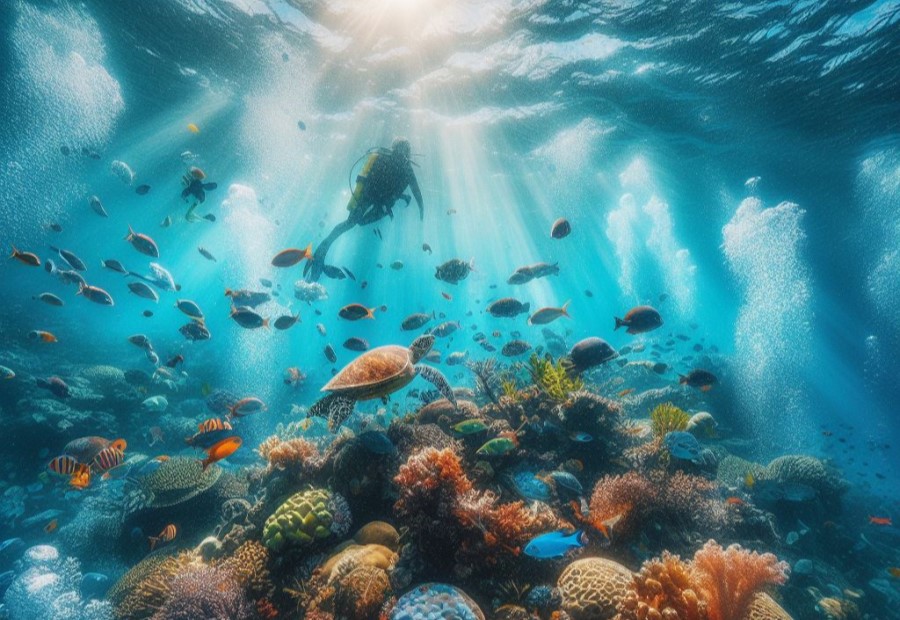
When planning an outdoor adventure, it is crucial to be aware of the permits and regulations associated with your chosen location. This ensures a safe and enjoyable experience while respecting the environment and other visitors.
- Research: Conduct thorough research to understand the specific permits and regulations required for the activities you plan to engage in. Different locations may have different requirements.
- Obtain permits: Once you have identified the necessary permits and regulations, ensure you obtain them before your trip. This may include permits for camping, hiking, fishing, or any other relevant activity.
- Comply with regulations: Familiarize yourself with the permits and regulations imposed by the authorities to protect the natural resources and wildlife in the area. Follow these regulations to minimize your impact on the environment and maintain the integrity of the location.
- Respect limitations: Some areas may have limitations on group size, camping locations, or specific areas that are off-limits. It is essential to respect and adhere to these permits and regulations to preserve the natural beauty of the location and ensure everyone’s safety.
- Stay informed: Stay updated on any changes to permits and regulations. Authorities may enforce new restrictions or close certain areas temporarily. Stay informed through official websites, local ranger stations, or visitor centers.
By understanding and adhering to permits and regulations, you can enjoy your outdoor adventure responsibly while preserving the natural environment for future generations.
Finalizing the Decision
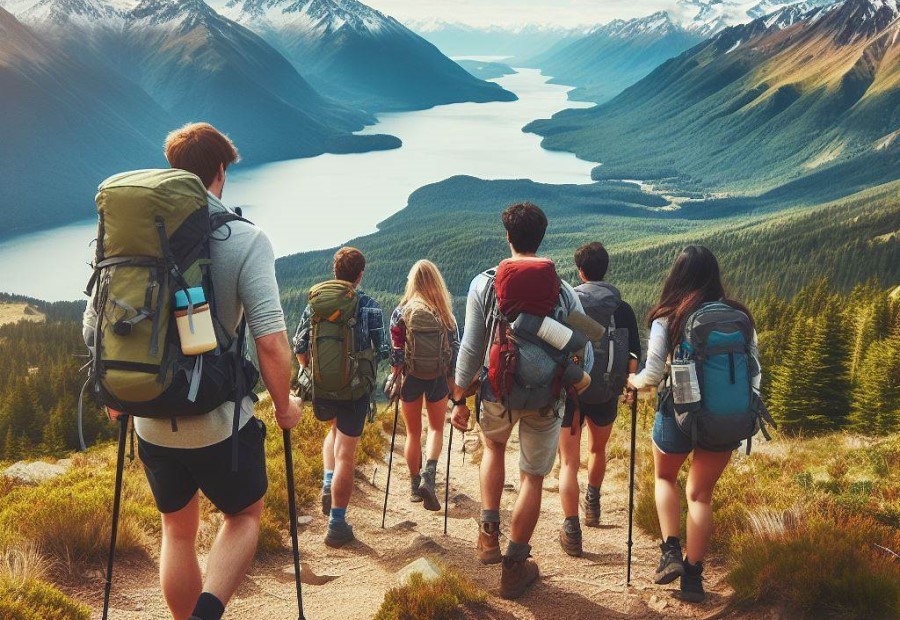
When it comes to finalizing the decision for choosing a suitable location for an outdoor adventure, there are several steps to consider:
- Review all the options available based on your preferences and interests, taking into account factors such as proximity, terrain, and activities offered.
- Evaluate the safety measures and accessibility of each location, checking for any potential risks or restrictions that may impact your adventure.
- Assess the cost and logistics involved, making sure the location fits within your budget and that you have the necessary equipment or resources for the adventure.
- Consider the weather conditions during the time of your planned adventure and ensure that the location is suitable for the activities you have in mind.
- Seek recommendations and reviews from others who have visited the location. Their experiences and insights can provide valuable information to help you make your decision.
Frequently Asked Questions
How do I choose a suitable location for outdoor adventure?
When choosing a location for outdoor adventure, consider factors such as the climate, geographic location, and activities you plan to engage in. Research the climate and weather conditions throughout the year, assess the physical properties of the area, and ensure the site is suitable for your intended activities.
What are some important considerations for planning outdoor events?
When planning outdoor events, it is crucial to have a backup plan in case of bad weather. Select a location with both indoor and outdoor venues to provide alternatives in case of rain.
Obtain permits and inquire about curfews. Arrange for protective cover and hydration stations. Also, plan activities that can work well both indoors and outdoors to avoid cancellations due to weather.
How can I ensure accessibility for all attendees in choosing an outdoor venue?
When selecting an outdoor venue, it is important to consider accessibility for all attendees, including those with disabilities. Ensure that the venue has accessible entrances, pathways, and facilities.
Check if there are accommodations available for individuals with mobility challenges and ensure that the overall environment is inclusive.
What should I consider when choosing an outdoor recreational site in North Wales?
When selecting an outdoor recreational site in North Wales, consider the climate and season, geographic location, and activities you plan to carry out. Understand the site’s climate and weather conditions throughout the year, assess the physical features of the area, and ensure that the location is suitable for the specific activities you have in mind.
Which destinations offer epic outdoor adventure opportunities?
There are several destinations that offer epic outdoor adventure opportunities. Some of these include Antarctica, Argentina, Australia, Botswana, Brazil, Canada, Iceland, Kyrgyzstan, Mongolia, Namibia, New Zealand, Norway, Peru, Switzerland, and the United States.
Each destination offers unique landscapes and a wide range of activities for adventure seekers.
Which small cities are best for adventure enthusiasts seeking outdoor activities?
There are several small cities in the U.S. that offer easy access to outdoor adventure activities. Some of the best small cities for adventure enthusiasts include Bend, OR; Durango, CO; Santa Fe, NM; Spearfish, SD; and Greenville, SC. These cities provide opportunities for various outdoor activities such as hiking, biking, fishing, rock climbing, and more.

